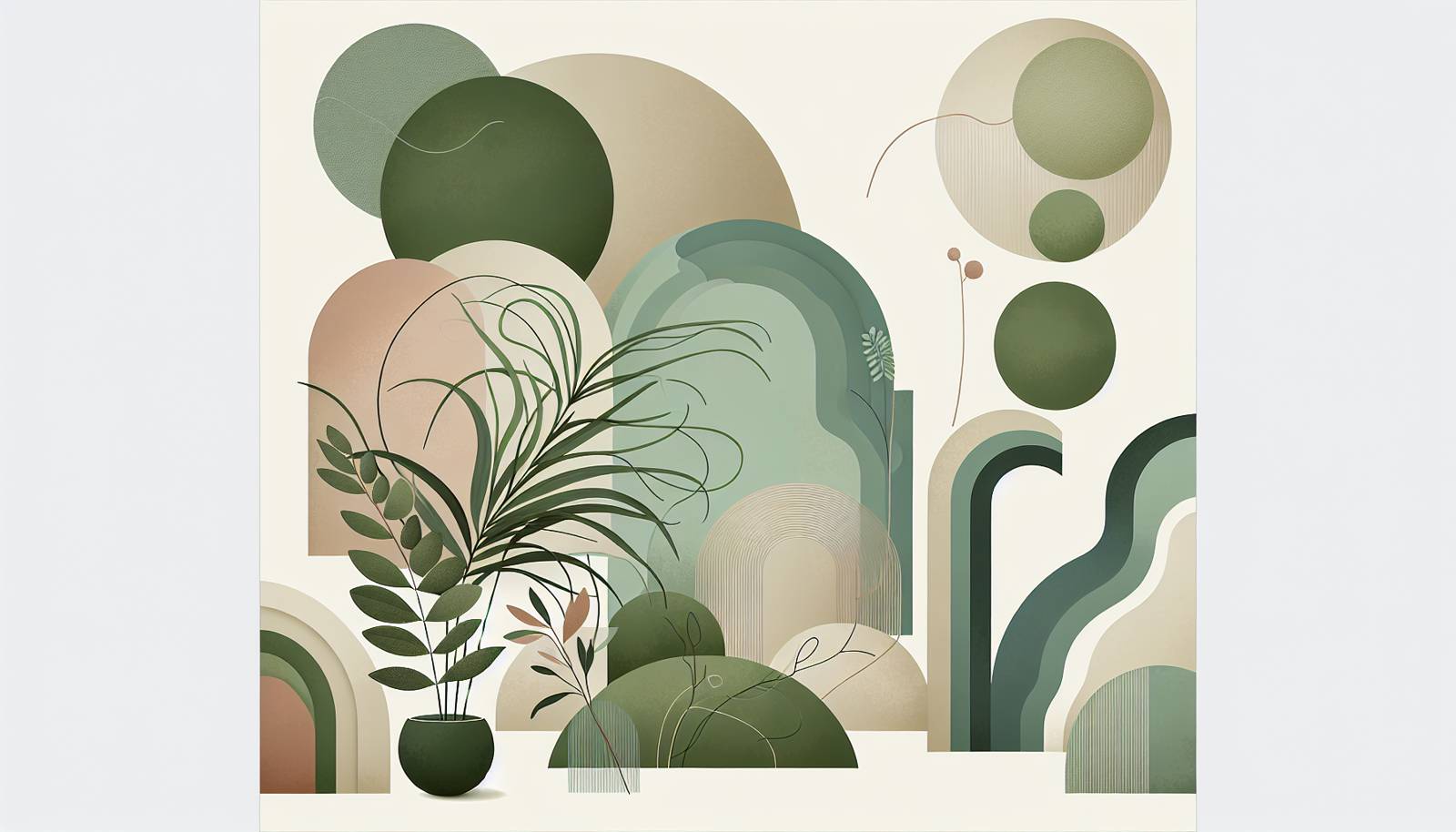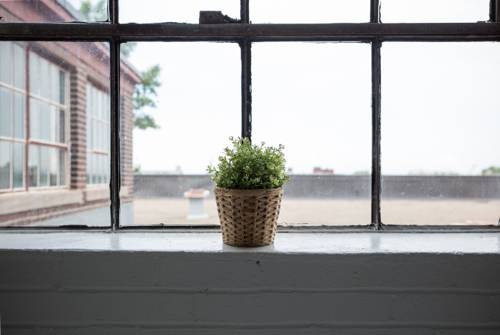
FAQ About Versatile Indoor Plant Arrangements

What are the benefits of arranging indoor plants creatively?
Arranging indoor plants creatively can enhance both aesthetics and functionality within a space. Aesthetically, plants can introduce diverse textures and colors, creating focal points or accents in a room. Functionally, strategically placed plants can improve air quality, increase humidity, and provide psychological benefits such as stress reduction and enhanced concentration. Creative arrangements can also make the best use of space, especially in small areas, allowing for a lush, natural look without being overwhelming.

How can I choose the right indoor plants for my arrangement?
Choosing the right indoor plants depends on several factors including light conditions, humidity levels, and the amount of care you’re willing to provide. Consider plants that suit the lighting of your space: low light plants such as snake plants or pothos for dim areas, and bright light plants like succulents or fiddle leaf figs for sunnier spots. Additionally, assess your ability to maintain the plants—some require more frequent watering and care than others. Mix plants with varying leaf shapes and heights to add visual interest to your arrangements.

What are some popular indoor plant arrangement styles?
Popular indoor plant arrangement styles include clustered arrangements, where plants of varying heights and types are grouped together; linear arrangements, which involve plants placed in a straight line on shelves or windowsills; and hang-and-pitch arrangements, using hanging planters for a cascading effect. Additionally, the use of plant stands or multi-tiered shelves can create layers and height differences, which add depth and dimension to your arrangement.

How do I arrange indoor plants to maximize natural light exposure?
To maximize natural light exposure, place plants near windows where they can receive direct or indirect sunlight according to their needs. South-facing windows typically offer the most light, while east- and west-facing windows provide moderate light. You can use plant stands or hangers to elevate plants to reach better light if windowsills are scarce. Additionally, rotating plants regularly ensures even light distribution and helps prevent uneven growth.

Are there specific types of containers that work best for indoor plant arrangements?
The type of container used in indoor plant arrangements can greatly affect both the aesthetic and the health of the plants. The most popular options include ceramic pots for a classic look, wicker baskets for a rustic vibe, and glass terrariums for an elegant, modern aesthetic. Ensure containers have drainage holes to prevent waterlogging. Choosing a container with a cohesive style and color palette with your interior decor can enhance the overall look of the arrangement.

Can indoor plant arrangements improve indoor air quality?
Yes, many indoor plants are effective at improving indoor air quality by filtering toxins and producing oxygen. Plants such as spider plants, peace lilies, and Boston ferns are known for their air-purifying abilities. Including a variety of these plants in your arrangements can help maintain a healthier indoor environment by reducing levels of pollutants such as formaldehyde, benzene, and carbon monoxide.

How should I care for indoor plant arrangements to keep them healthy?
Proper care for indoor plant arrangements involves regular watering, appropriate lighting, and periodic cleaning. Ensure that you water according to the specific needs of each plant—some may require more frequent watering while others prefer dry conditions. Check that each plant is receiving adequate light and adjust their placement if necessary. Clean leaves with a damp cloth or gently mist them to remove dust and prevent pests. Regularly check for signs of distress such as yellowing leaves or stunted growth.

What is the best way to incorporate large indoor plants into arrangements?
Incorporating large indoor plants into arrangements can add drama and focal points in a room. Place larger plants like fiddle leaf figs, rubber plants, or monstera as central pieces in a room or at corners to draw the eye upwards and create a sense of space. Pairing larger plants with smaller companions can create a balanced look. Use large textured pots or planters to complement the plant and integrate it seamlessly into your interior design.

How can I use vertical space in my indoor plant arrangements?
Utilizing vertical space is an excellent way to integrate plants without taking up floor space. Wall-mounted shelves, hanging baskets, and vertical planters can help achieve this. Arrange taller plants at the top and cascade smaller plants below for visual harmony. Vertical arrangements are particularly useful in small spaces, where floor and table surfaces are limited, allowing for more plants without cluttering the room.

What are some common mistakes to avoid when arranging indoor plants?
Common mistakes include overcrowding plants, using pots without drainage, mismatching plants with their environmental needs, and inconsistent care routines. Avoid arranging too many plants together without considering their space requirements and growth habits, which can lead to competition for light and nutrients. Always use containers with proper drainage to prevent root rot. Match each plant's light, water, and temperature preferences to its placement and ensure regular, consistent care for each type species.

How can I arrange indoor plants in small spaces?
In small spaces, use creative arrangements like vertical shelving or hanging planters to maximize room usage. Choose plants that suit the specific conditions of the space—consider low-maintenance, compact varieties like succulents, ZZ plants, or air plants. Small portable stands or tray-based arrangements can create clusters of plants without overwhelming the space. Use symmetry and color coordination to maintain an organized and visually appealing look.

What role do plant stands play in indoor plant arrangements?
Plant stands are a versatile tool in indoor plant arrangements, allowing for height variation and structural interest. They help lift plants off the floor or table surfaces, improving air circulation and access to light. Plant stands can support a layered arrangement, adding depth and preventing overcrowding on any single surface. With a range of materials and styles available, they can complement any interior decor.

Can I combine different species in one pot for my indoor arrangements?
Yes, combining different species in one pot, often referred to as companion planting, can create visually interesting and harmonious arrangements. Ensure that the plants have similar light, water, and soil requirements. A common approach is to use a combination of a focal plant, which is larger, surrounded by smaller filler plants that complement the centerpiece. This method is often used in creating container gardens or terrariums.

What are some tips for arranging indoor plants in mixed-use spaces like offices?
In mixed-use spaces like offices, it's important to consider both aesthetics and functionality. Choose low-maintenance, air-purifying plants like peace lilies or snake plants to improve the environment. Use planters that match the decor and can be easily moved if furniture layouts change. Additionally, arrange plants to create private retreats or divide workspaces subtly, enhancing both productivity and comfort.

How can lighting affect indoor plant arrangements?
Lighting is crucial to the success of indoor plant arrangements. Too much direct sunlight can scorch leaves, while insufficient light can hinder growth. Understanding the specific light requirements of each plant can guide you to position them in optimal locations. Supplemental lighting via LED grow lights can be used in poorly lit spaces to meet plant light needs and ensure healthy growth year-round.

What are some low light indoor plants suitable for arrangements?
Low light indoor plants include snake plants, pothos, ZZ plants, and peace lilies. These plants are adaptable to conditions with minimal natural light and require less frequent watering, making them ideal for shaded corners or rooms with few windows. They also tend to be hardy and low-maintenance, providing significant flexibility in how and where you can arrange them indoors.

Can indoor plant arrangements be seasonal?
Yes, indoor plant arrangements can be seasonal, adjusting to reflect different times of the year. During spring and summer, blooming plants like orchids or African violets can add vibrant colors. In fall and winter, consider foliage plants with interesting leaf patterns or indoor evergreens to maintain greenery. Seasonal decorations, like festive pots or plant toppers, can also help evoke the seasonal spirit.

How do I troubleshoot issues with my indoor plant arrangements?
Common troubleshooting steps include checking for proper water drainage, ensuring sufficient light, and regularly inspecting for pest infestations. Yellow or brown leaves can indicate overwatering or poor drainage, needing either less water or better pot drainage. Stunted growth may suggest inadequate light, necessitating a change in placement or supplemental lighting. Regular cleaning and inspection can prevent and treat pest issues, maintaining a healthy arrangement overall.

What tools or accessories can enhance indoor plant arrangements?
Accessories such as plant stands, hangers, and pebbles can enhance indoor arrangements by adding height and texture. Self-watering pots can make maintenance easier, while decorative stones can be used over soil for an aesthetically pleasing finish. Moisture meters can help monitor when plants need watering, ensuring they are neither over- nor under-watered, thus simplifying plant care and boosting the success of your arrangements.
